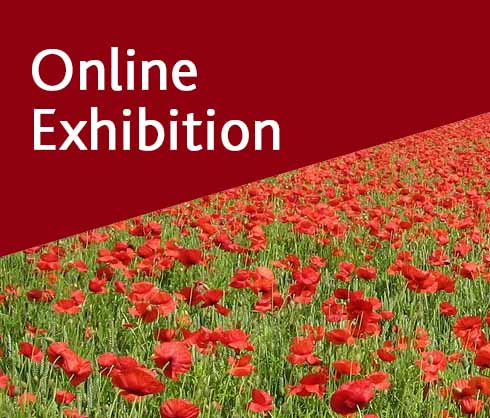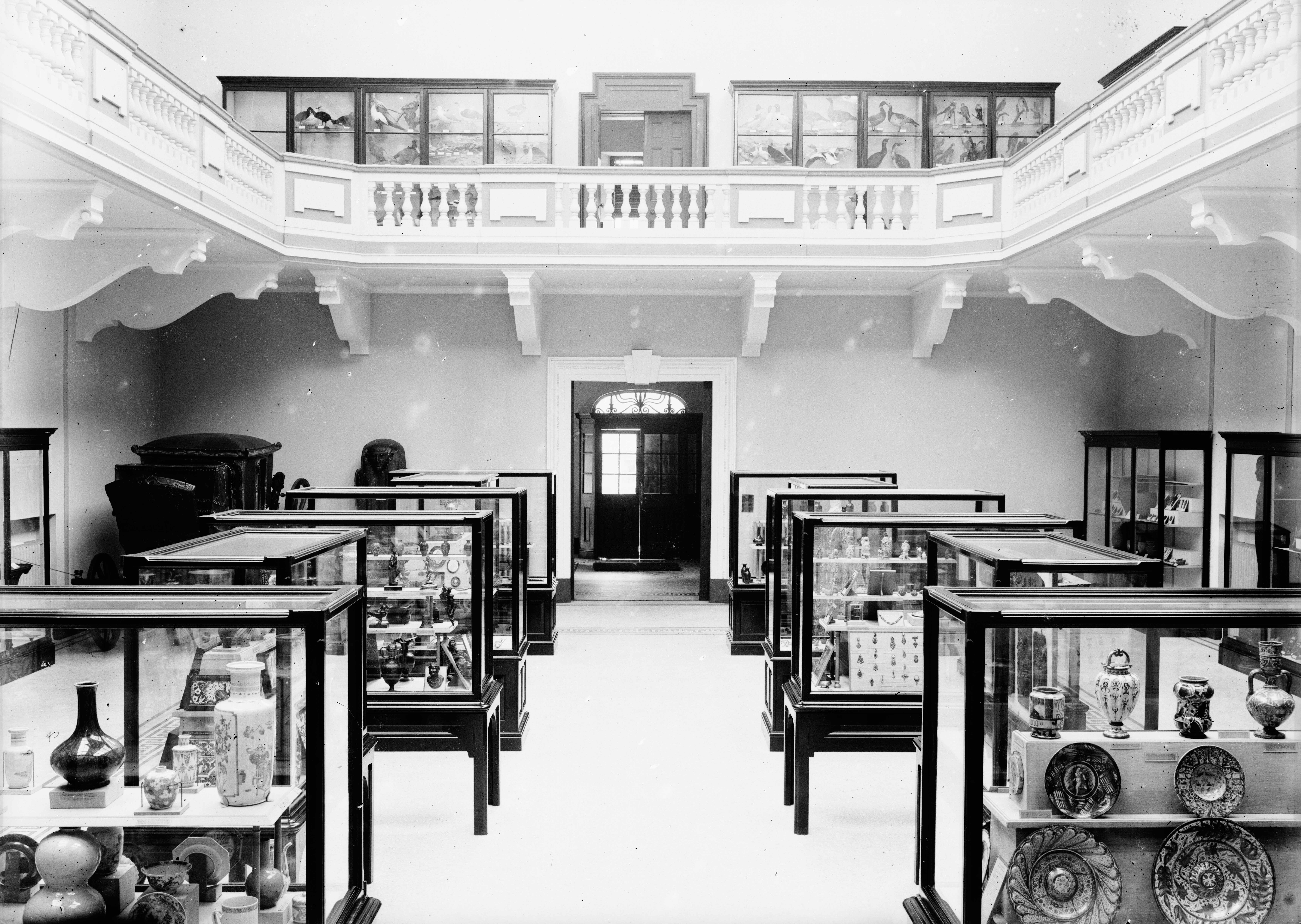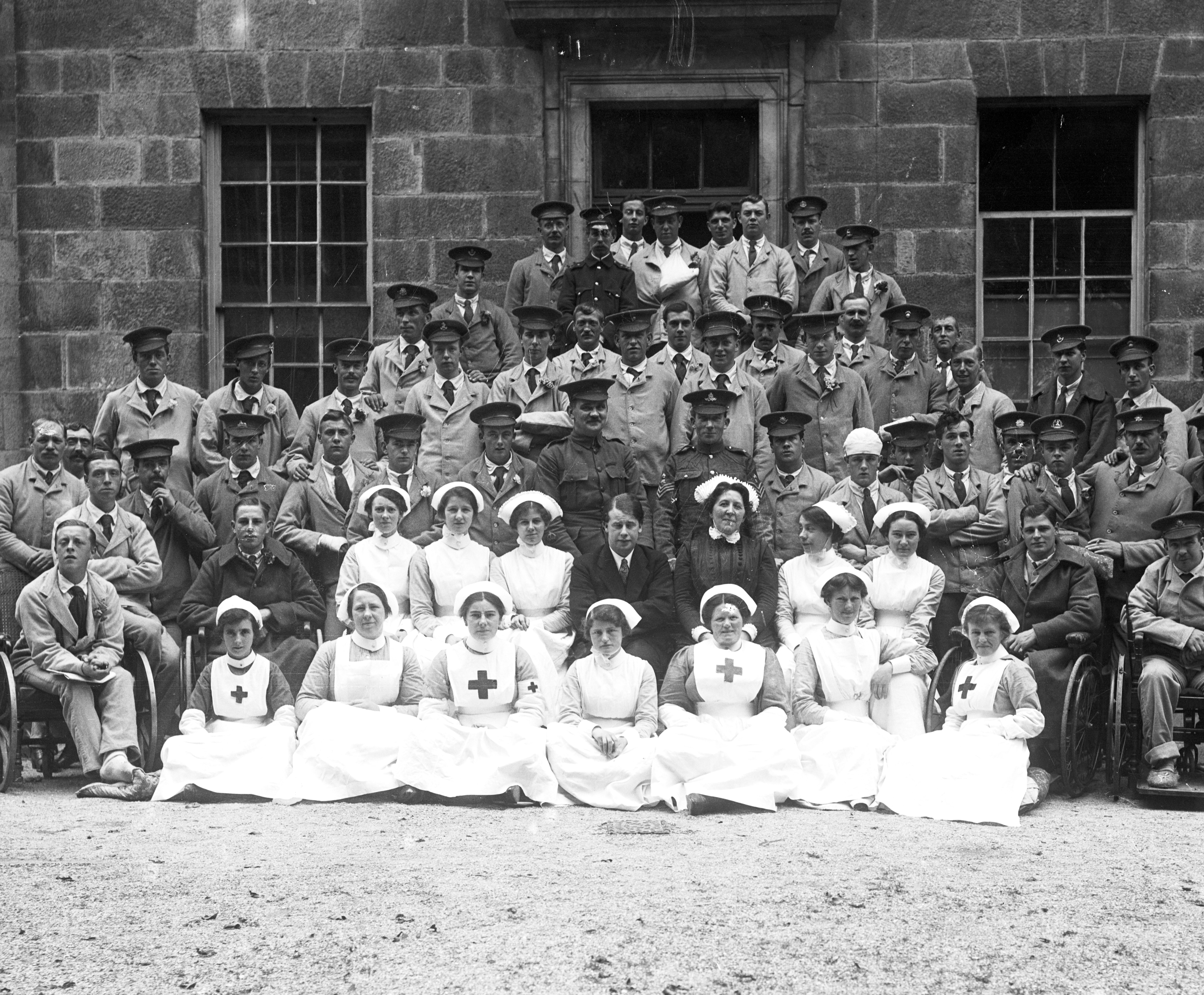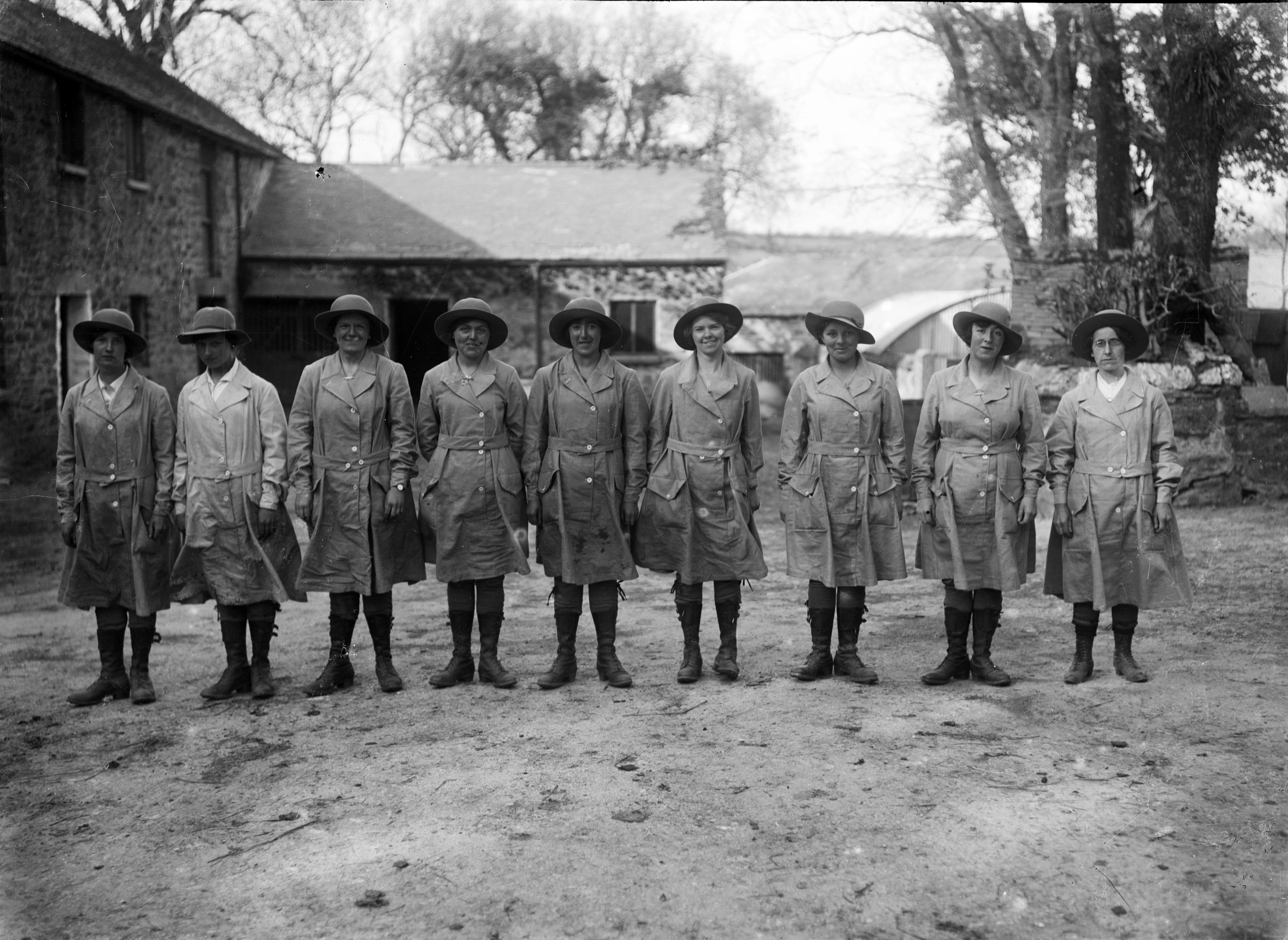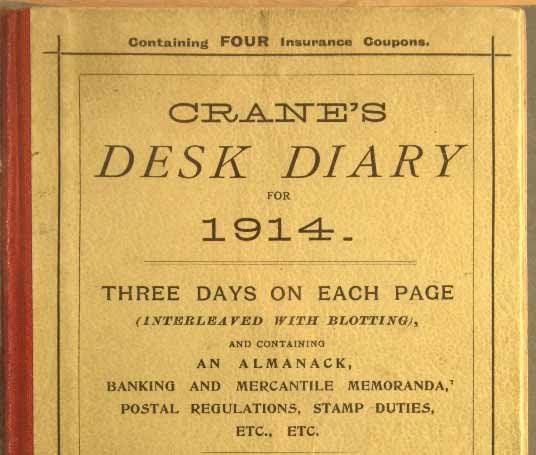Messages from the Royal Cornwall Infirmary
Within the RIC’s collections lie two small, leather-bound autograph albums from the Royal Cornwall Infirmary in Truro. Remarkably, these unassuming objects contain entries written and illustrated by injured soldiers during the First World War. The messages offer a rare insight into life at the Infirmary, along with the thoughts and feelings of those convalescing.
The Royal Cornwall Infirmary opened in 1799, making it the first hospital in the county. It started life with just 20 beds – 10 for men and 10 for women, on separate floors. The building was much expanded throughout the 19th and 20th centuries, as was the surgery department, which developed alongside improved surgical techniques.
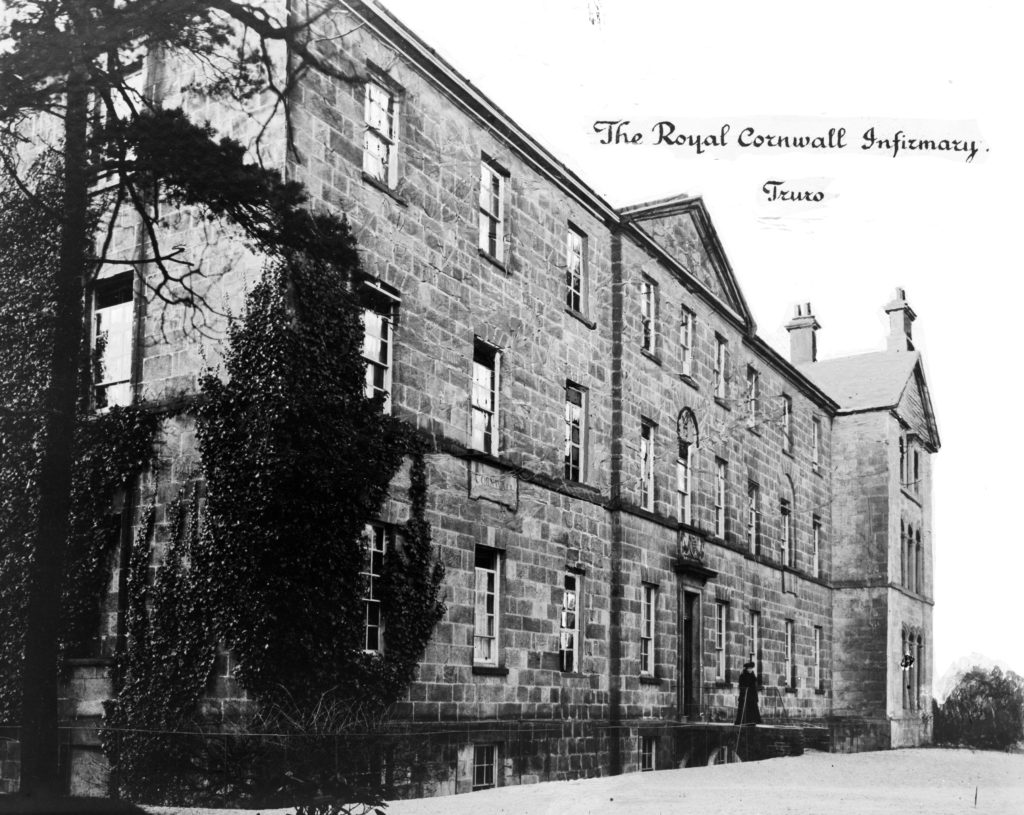
Main facade of the Royal Cornwall Infirmary in 1917, during the First World War. Photographer: possibly Arthur Philip. © From the collection of the RIC (TRURI-TRUhrc-5).
Throughout the First World War, the Infirmary provided accommodation for a large number of wounded soldiers. This began in 1914, when they offered 50 beds to the War Office for serious surgical cases from the Duke of Cornwall’s Light Infantry. The first contingent arrived in Truro on June 16th 1915, carried from the railway station in convoys of ambulances.

Wounded soldiers in an open car outside Truro Railway Station on June 16th 1915, en route to the Royal Cornwall Infirmary as the first batch of patients. Photographer: A W Jordan. © From the collection of the RIC (TRURI-TRUhrc-24).
The harsh reality of what these patients were going through is made painfully apparent by the Infirmary autograph albums. Private F Harding, of the British Army Worcester Regiment, wrote in 1916:
“This world is as round as a wheel
Death is the sting we all must feel.
When War is raging and battles nigh
God and soldiers are all the cry.
But when War is over, and all things righted
God is forgotten and the Soldiers “Slighted” ”.
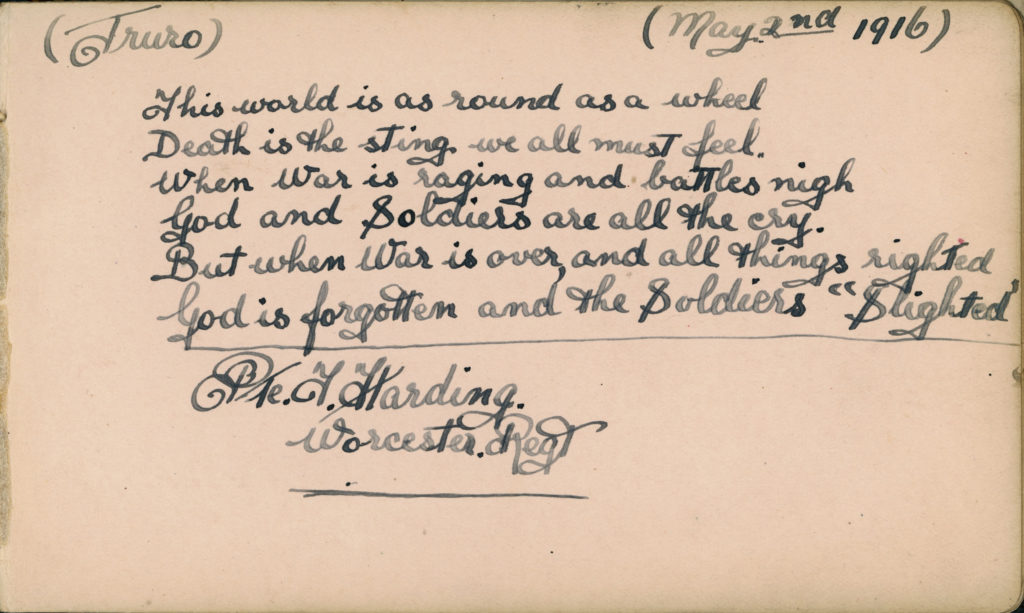
The entry of Private F Harding, of the British Army Worcester Regiment, dated May 2nd 1916, in one of the Royal Cornwall Infirmary autograph albums. © From the collection of the RIC (TRURI:2010.34).
Photographs of the Infirmary in the RIC collection, taken between 1914 and 1918 by A W Jordan, show the rolling of bandages and operations in progress. Interestingly, some of the nurses are wearing Red Cross uniforms.

Operation in progress at the Royal Cornwall Infirmary in 1915, with Red Cross nurses. Photographer: A W Jordan. © From the collection of the RIC (TRURI-TRUhrc-20).
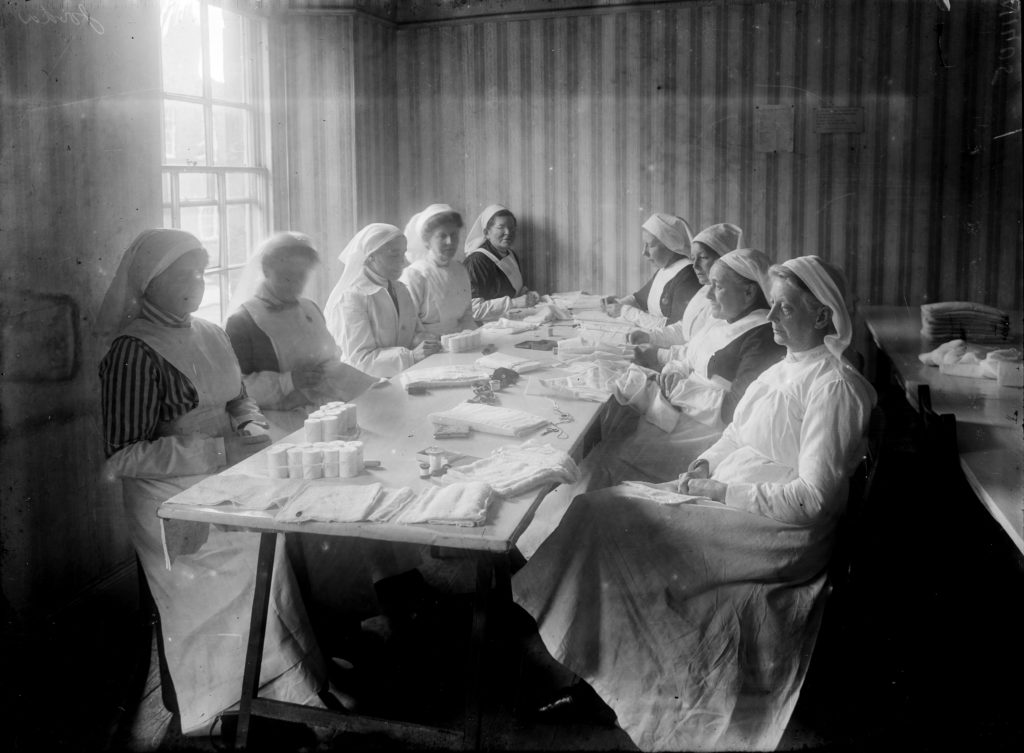
Nurses rolling bandages at the Royal Cornwall Infirmary, possibly in late 1918. Photographer: A W Jordan. © From the collection of the RIC (TRURI-TRUhrc-23).
Many people were inspired to train to help the sick and wounded during the war, in which the Red Cross played a vital role – teaching female Volunteer Aid Detachments (VADs) first aid, home nursing and hygiene. In the end, a call was made for women to join the medical profession, and medical degrees were opened up to women for the first time.
The nurse’s cap, blue dress and white apron with the Red Cross emblem sewn on the front make depictions of VAD’s instantly recognisable in the Infirmary autograph albums. For example, in 1915 an M Jones drew two volunteers with the attached dialogue:
“Would you allow a patient to kiss you?”
“Um – well, I think it is our duty to make allowances for the weakness of mankind, don’t you?”
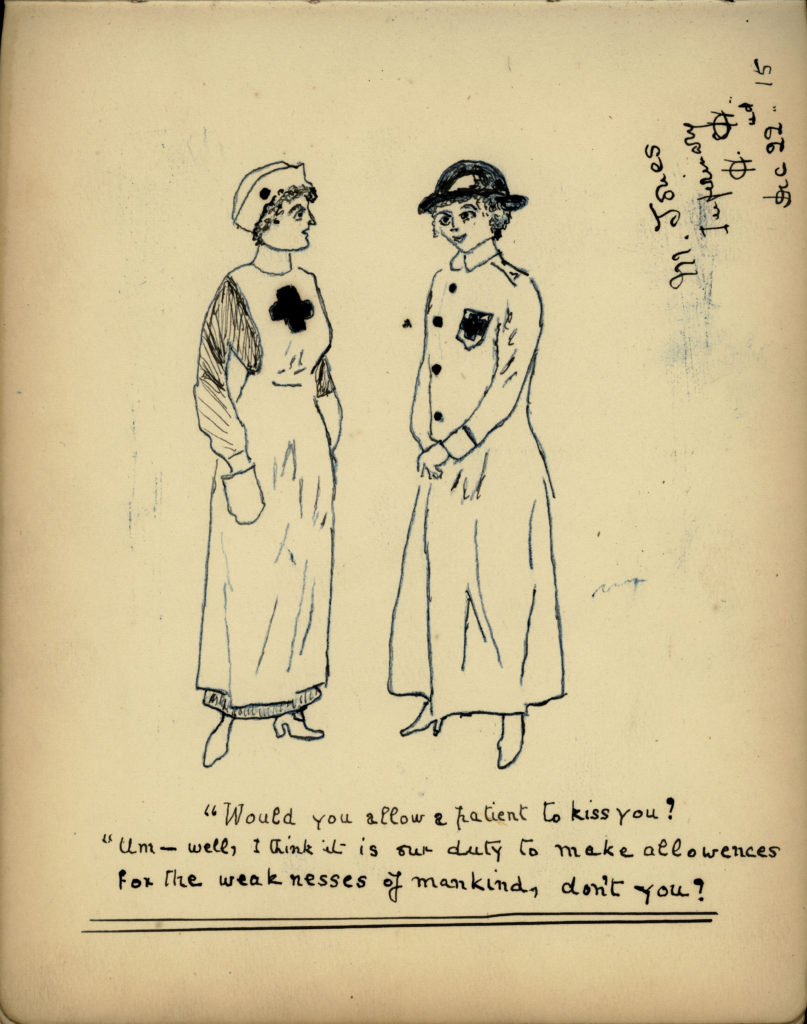
The entry of an M Jones, dated December 22nd 1915, in on of the Royal Cornwall Infirmary autograph albums. © From the collection of the RIC (TRURI:2008.84).
Similarly, in 1917, W A Sowden, of the British Army 15th West Yorkshire Regiment, illustrated two soldiers carrying bunches of mistletoe and chasing two nurses, inscribed:
“Xmas at the R.C.I.”.
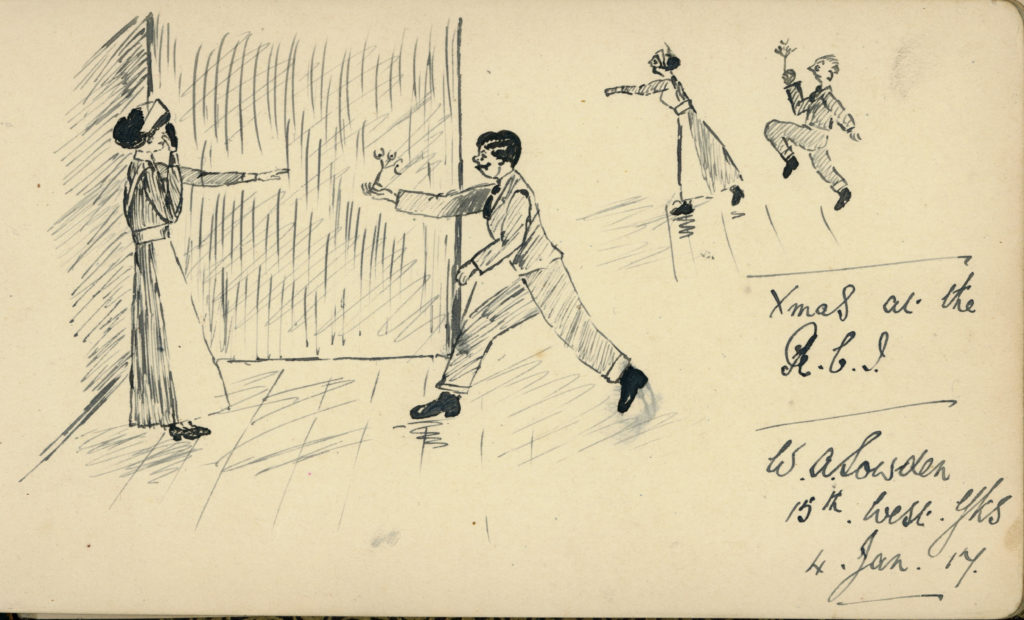
The entry of W A Sowden, of the British Army 15th West Yorkshire Regiment, dated January 4th 1917, in one of the Royal Cornwall Infirmary autograph albums. © From the collection of the RIC (TRURI:2010.34).
These artworks reveal a cheerier side to life at the Infirmary, whereby the staff and patients celebrated Christmas, took part in wheelchair races and played croquet.
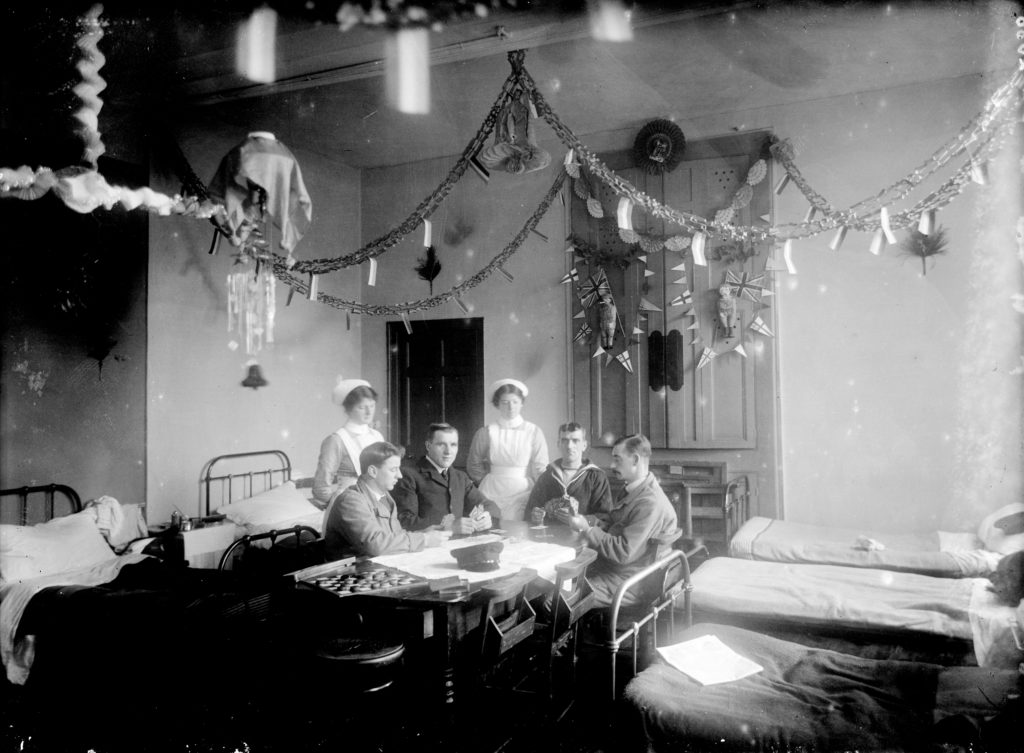
Nurses and patients (one sailor) playing cards in the ward at the Royal Cornwall Infirmary, Christmas 1915. Photographer: A W Jordan. © From the collection of the RIC (TRURI:TRUhrc-21).

Three patients in wheelchairs, one in military uniform, engaged in a race outside the Royal Cornwall Infirmary, with hospital staff looking on, probably on July 21st 1916. Photographer: A W Jordan. © From the collection of the RIC (TRURI-TRUhrc-11).

A patient, leaning on a crutch, and a nurse, playing croquet in the garden of the Royal Cornwall Infirmary – probably on 21st July 1916. Photographer A W Jordan. © From the collection of the RIC (TRURI-TRUhrc-13).
The First World War ended in November 1918. However, this was not the end of the Royal Cornwall Infirmary’s association with conflict. During the Second World War, on August 6th 1942, a bomb fell near the main entrance – virtually demolishing the south wing.
Despite this disaster, the Infirmary endured, becoming part of the National Health Service in 1947 and continuing until the 1990s, when services were transferred to the Royal Cornwall Hospital at Treliske.
You can read a selection of digitised entries from the Royal Cornwall Infirmary autograph albums here.
For more about the Red Cross, please see the Museum at War pages.
RIC archive images of the First World War can be found on Media Storehouse.

